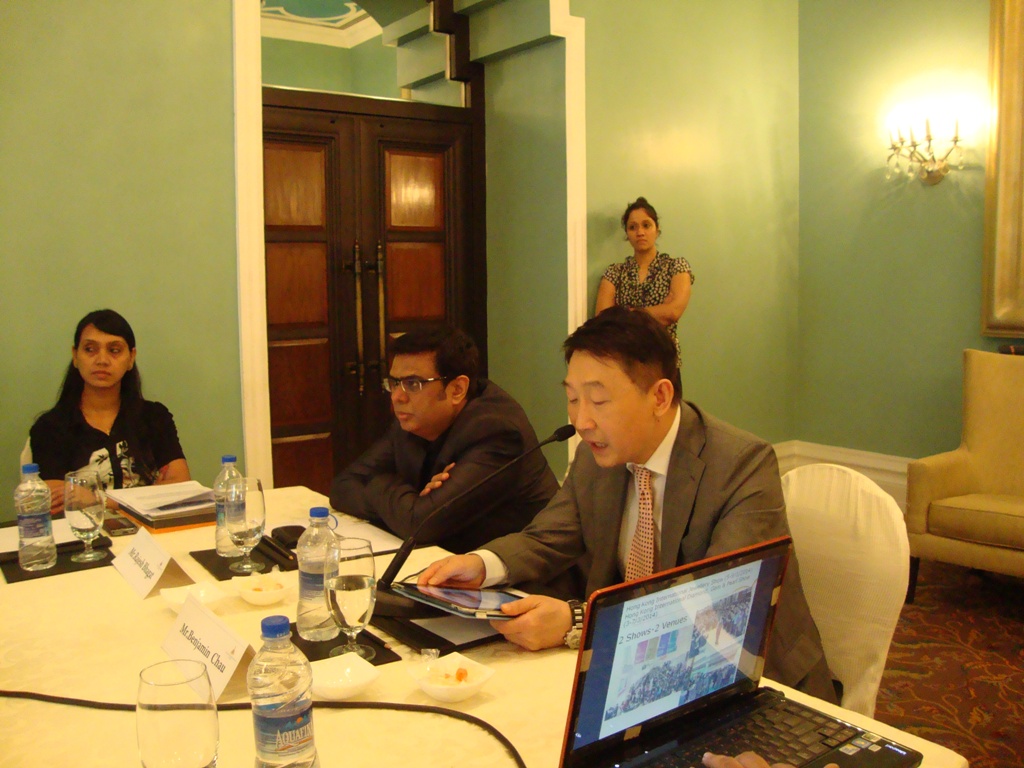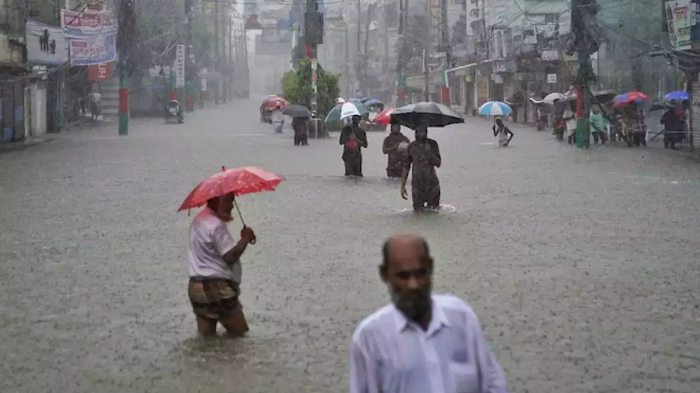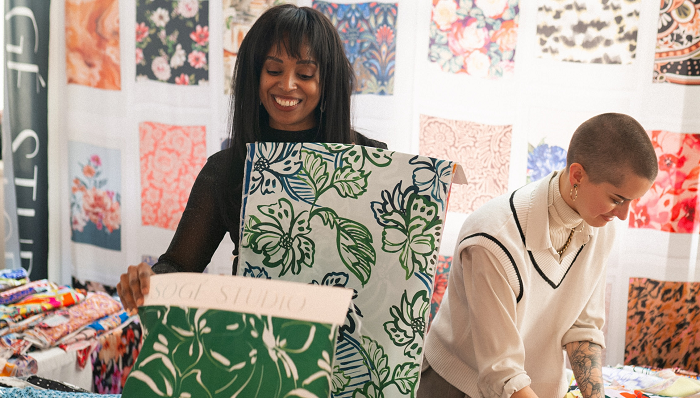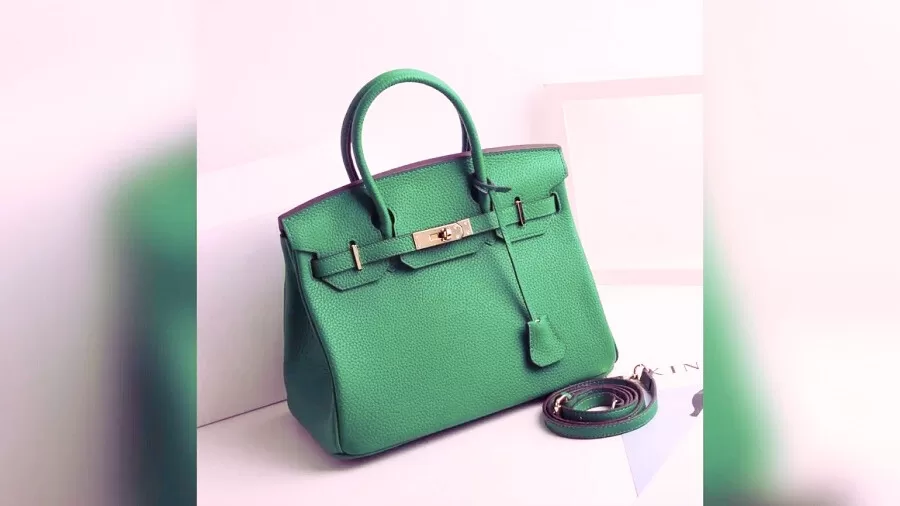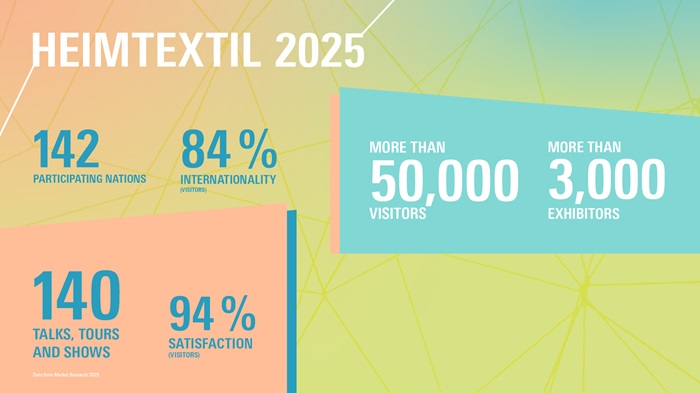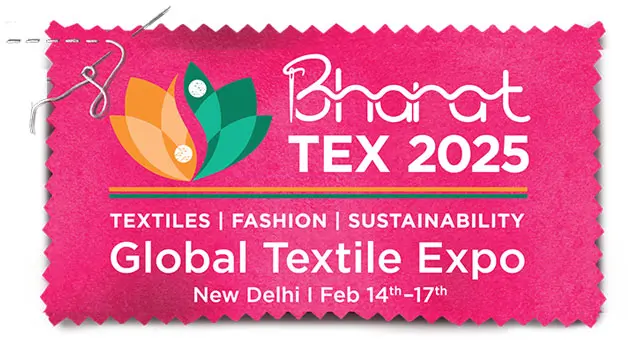FW
Readymade garment factories in Bangladesh that are non-compliant will be relocated in an industrial park. The government has set up a company toward this end. The aim is to make the country’s apparel industry compliant. Small and medium entrepreneurs will get priority in allotment of plots. The company will sign a memorandum of understanding with Hong Kong’s KRD International Investment Group for establishing the park.
The industrial park will be established on 532 acres of land, of which 30 per cent will be used for infrastructural development and the rest for factories. An apparel maker who exports products worth $1.2 million and above will have to pay 40 per cent of the total plot value as down payment. And an apparel maker who exports below $1.2 million dollars will have to pay 20 per cent of the price as down payment.
The park will have facilities like power station, fire brigade, child care, police station, bank, river port, pump house, solid wastage pump, central effluent treatment plant and dumping yard.
About 1,700 applications have been received from garment makers as against 432 units to be allocated in the proposed park.
A European project aims to fight, the negative consequences of bedbugs and ticks by developing biodegradable materials. Due to severe climate change in Europe, the population of ticks and bedbugs are on the rise. Migration reduces the susceptibility to bedbugs, changes in patterns of insecticide use are some of the reasons contributing to the rise in insects.
This issue resulted in the development of natural material in line with EU-authorized biocide standards brought together a consortium of 10 partners, in collaboration under the BETITEX project. The team is focusing their design efforts in two key domains including SMEs in the form of Personal Protective Equipment (PPE) and domestic use in the form of home linen.
Bedbugs do not cause much harm to health but as far as ticks are concerned, it carries pathogens which can cause severe illnesses. The BETITEX research revolves around the use of repellent spray. These sprays contain biocides that can result in higher protection against ticks and bedbugs, however the acceptability by the European Biocides Directive due to their toxicity and their environmental impact is in question. To tackle this, the project aims to develop lab cultures of both bedbugs and ticks, alongside biocide efficacy testing of the insecticide-treated textiles.
The use of eco-friendly technologies is yet to be common among manufacturers across the board. This is the reason members of the BETITEX consortium expect their results to contribute to the promotion of a greener and more competitive economy through the use of natural, biodegradable textile materials in combination with eco-friendly textile technologies.
US workers have appealed to US Trade Representative to eliminate Swaziland from the lucrative apparel and textile markets. As a result Swaziland stands to lose AGOA (African Growth and Opportunity Act) benefits as the American Federation of Labour and Congress of Industrial Organizations (AFL-CIO) accuse the government of interfering with the rights of workers. The country is also being accused of failing to observe the rights of association, the right to organise and bargain collectively, and the right to acceptable conditions of service.
Owing to pressure from workers and civil society, President Obama terminated trade benefits for Guinea, Madagascar and Niger in 2009 due to failure in making continual progress in meeting US requirements for the AGOA. However, trade benefits were restored in 2011 after President Obama had satisfied himself that there was continual democratic progress in these three African nations.
The AFL-CIO is the same federation that had put pressure on the then President Bill Clinton in 1999 and 2000 to remove Swaziland from the Generalised System of Preferences (GSP) until His Majesty the King led a delegation to the US to intervene.
The total US, Swaziland trading was worth $107 million trade in 2012. Swaziland’s exports to the US included knit apparel worth $31 million, wovens apparel valued at $29 million among other articles. This is, therefore, the market workers in America say the country must forfeit. <br/>
Scientists at Hohenstein Institute in Boennigheim, Germany have developed a new textile finish which has antiviral and antibacterial features. This unique technology can be used in products for nurseries, hospitals, child day care centre etc. As a part of the research, scientists from the institute are investigating textile surface which can catch infections due to bacteria or viruses that can be transmitted by hand or air that is the main route for infections. Cleaning surface is therefore an important aspect to prevent any kind of infection.
The test includes cleaning cloths wherein the antibacterial and antiviral properties were combined for functional textile processing. These tests were carried out on different surfaces, such as glass, stainless steel or wood, which were contaminated with viruses and wiped with the finished cleaning cloths. The bacterial virus MS2, a non-pathogenic surrogate virus, which is comparable to clinically relevant viruses such as novovirus, poliovirus, hepatitis A or enteroviruses, was used as the test virus.
The finished microfibre cloths absorbed 91 per cent of the applied viruses, the Institute reports. At the same time, the virus concentration in the cloth was reduced by approximately 90 per cent.
www.hohenstein.com
Kevin Burke who was associated with American Apparel & Footwear Association (AAFA) for nearly 13 years has quit AAFA as its President and CEO. Following the decision, the AAFA Board of Directors is in search of a new President and CEO to fill his space. Burke will join the Airports Council International–North America as President and Chief Executive.
Burke served AAFA with passion and elan during his tenure with AAFA. AAFA Chairman Philip C Williamson, President, CEO and Chairman of Williamson-Dickie Manufacturing Company acknowledged Burke’s hardwork and vision for the company and applauded his attempt to position AAFA on the global front.
Burke pointed out that his tenure with AAFA was a great learning experience and was thankful for the opportunity it got to serve AAFA. He felt that the American apparel and footwear industry is on its road ahead and should maintain its competitiveness and grow in leaps and bounds. Burke also mentioned that he will miss being part of the AAFA.
During his tenure, the association’s membership grew to more than 530 corporate members and represented more than 1,500 name brands. At present more than 25 per cent of the AAFA’s membership is related to retail.
www.wewear.org
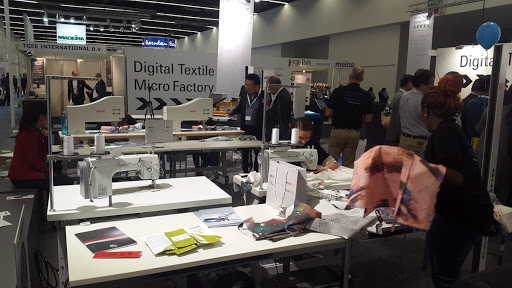 Dual events of ready-to-wear fashion and fabric were held at Lille Grand Palais from November 27-28, 2013. The increase in the flow of visitors confirmed fashion retail chains’ enthusiasm for complementary offers. New organizers, PV Manufacturing improved access between the shows, easing flow of visitors and avoiding double counting.
Dual events of ready-to-wear fashion and fabric were held at Lille Grand Palais from November 27-28, 2013. The increase in the flow of visitors confirmed fashion retail chains’ enthusiasm for complementary offers. New organizers, PV Manufacturing improved access between the shows, easing flow of visitors and avoiding double counting.
The business climate was intense during the two day as visitors
came to see their regular suppliers and as also the latest updates. The days chosen for the fairs matched with the buying period for updating and research for new fashion products distribution all over Europe.
Talking about the expectations of buyers, Isabelle Vermeulen, General Commissioner of the fairs says, “Our exhibitors must have the ability to adapt, fit to the trends and adjust the volumes and deliver quickly. Better reactive and flexible prices were the characteristics of the fairs and that’s what the buyers were looking for.”
Around 2,111 buyers, designers and product managers visited Tissu Premier and Collections over the two days. Big distribution chains were also present. European visitors came in large numbers a proof of the growing interest of foreign buyers for the fairs. “There was an increased turnout of European visitors, revealing a growing appreciation among foreign buyers for the Lille shows’ responsiveness and the new intermediary dates. Great Britain (+45 per cent compared to June 2013), Italy (+15 per cent) and Belgium (+5 per cent) continued to come in growing numbers since June. The proportion of international visitors was up from 25 per cent in June to 34 per cent in November,” says Vermeulen. The fairs also saw visitors from Ukraine, Ireland, Denmark, Israel. “There is a strong demand for manufactured products throughout the European fashion industry. The Lille shows set themselves apart by keeping pace with demand and offering a wide range of on-trend update solutions,” added Vermeulen.”
Vermeulen further added, “We moved from an only price focus to the need for novelty, which created an impulsive purchase. In this context, manufacturers became more and more efficient in terms of creation and quality. If the activity is only based on updating, the fast fabrication of a product and short delays between the design of a model and its notice of sale is hardly compatible with a geographic distance.”
Although all major retail chains were in attendance, the event saw a drop in the number of French visitors, deterred probably by persistently low domestic consumption. The shows attracted cautious French buyers demanding high-quality fashion solutions and impressed by the exhibitors’ responsiveness. Talking about the reason for the drop, Vermeulen explains, “The French visitors were less perhaps slowed down by domestic consumption decrease. The general trend for French consumers is to buy less but better.”
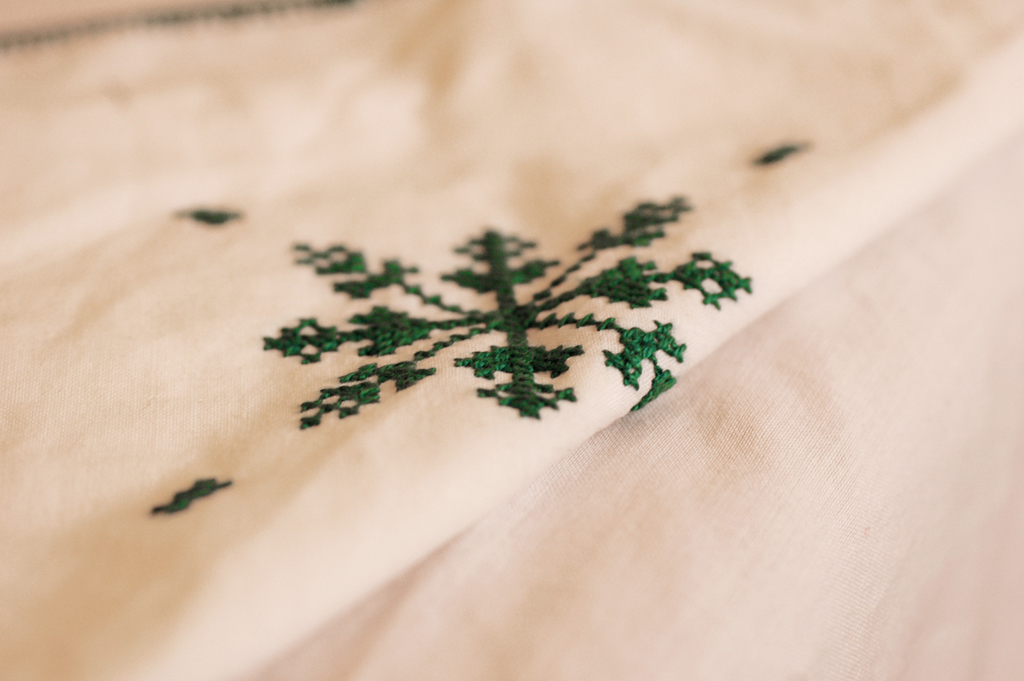 Premier Vision fair puts together new innovations through a unique website called Maison D’Exceptions to feature exceptional offerings. On display are various forms of handcrafts, traditional innovative artisanship, fashion, textiles, art and heritage. Maison D’Exceptions also offers information about unique remarkable textiles through artisans, producers, luxury houses, designers, institutions, foundations, museums, schools, artists, media and much more.
Premier Vision fair puts together new innovations through a unique website called Maison D’Exceptions to feature exceptional offerings. On display are various forms of handcrafts, traditional innovative artisanship, fashion, textiles, art and heritage. Maison D’Exceptions also offers information about unique remarkable textiles through artisans, producers, luxury houses, designers, institutions, foundations, museums, schools, artists, media and much more.
Among the various techniques on display is, ‘Tatting’, an artisan textile technique that demands precision and creativity at once. It is a series of knots and loops that make an incredible, durable and decorative lace. Due to its wide adaptability, tatting lends itself to be applied to multiple creations and objects: doilies, collars, veils, trousseau, curtains, and other decorative and fantasy pieces. Rarely used in industry, the craft is rare and is principally a meditative leisure activity with proven stress-relieving capabilities.
Parsi embroidery is another unique technique occupying a prominent place in the Indian textile tradition. The Parsis, are exiled Iranians who have been living in India since the 8th century to escape persecution and freely practice their religion derived from Zoroastrianism.
By the mid 19th century, the Parsis initiated trade with China. They travelled to Canton to sell cotton, and then establish trade with pherias, Chinese artisans, who in turn sold those pieces of sophisticated embroidery, intended to decorate the edges of the saris worn by high society women. Consequently, some Parsi women learned the technique and combined it with elements of their own culture, the technical and aesthetic influences sometimes from the east and sometimes from the west, thus creating a new, multicultural product.
The patterns, which are highly symbolic, illustrate this great variety: phoenix, pagodas, peonies and chrysanthemums reflect its Chinese origins; Chakla Chakli (juxtaposed birds), lilies, jasmines and cypresses – symbols of life and eternity – refer to Persia, while peacocks and lotuses are attached to the sub-continent which adopted it. This hybridization also permeates the technique, a blend of the (most common) passed flat stitch, the knot stitch, and the famous ‘forbidden stitch’ (Khakha), whose complexity is such that those who work on it become blind.
Another embroidery technique called Terz El Ghorza is a needlepoint technique realized on stretched canvas and currently practiced across the country. The embroiderer creates a drawing progressively, such as a labyrinth of crosses, diagonal ornamentation, or geometrically-stylized flora, which are repeatable and could continue forever. With this technique it is nearly impossible to distinguish between front and backside, as the motifs appear identical on the two faces. The result is regular and without knots. It adorns the borders of home linens or inversely the centre of cushions, filling empty spaces like a large delicate ornamental tree.
Generally rendered in one colour, blue, black, emerald green, dark red on ecru or white cotton, this embroidery is sometimes produced in bi- or tri-colour varieties, notably for decorative pillows. In each city, the repertoire of motifs and colour associations is specific, having developed regionally, allowing experts to determine the geographical origin of a given work.
http://member.premierevision.com, http://www.maisondexceptions.com
The Bangladesh government is giving a stimulus package to the crisis-hit apparel industry to increase production capacity and offset losses suffered by the sector due to political instability in the country. This was stated by Finance Minister AMA Muhith during a meeting with a business delegation comprising of readymade garment (RMG), knitwear and textile leaders.
The FM said the government would be giving a stimulus package to the RMG firms that have suffered huge losses to increase their competitiveness, and a decision on this would be announced by the end of December, 2013.
Muhith said that the central bank’s loan policy will most likely be relaxed by this month for the apparel manufacturers in the country. The move comes in response to the demands from garment manufacturers and exporters in Bangladesh who stated that the current loan classification policy, which marks a loan to be classified when the repayment period is overshot by three months, is putting excessive pressure on them to make their payments.
At the meeting, Bangladesh Garment Manufacturers and Exporters Association (BGMEA) President Atiqul Islam, presented a three-point demand on behalf of garment manufacturers to make up for the excess cost incurred by them following the latest hike in wages, as well as another eight-point demand to compensate the losses suffered due to political unrest.
The demands included banking support and special loans, reduction of tax on export earnings, two-year exemption from classifying loans of textile, garment and backward linkages, financial incentives to explore new markets and more. The president of Federation of Bangladesh Chambers of Commerce and Industry (FBCCI) Kazi Akram Uddin Ahmed, president of Bangladesh Knitwear Manufacturers and Exporters Association (BKMEA) AKM Salim Osman and president of Bangladesh Textile Mills Association (BKMEA) Jahangir Alamin as well as representatives from Bangladesh Bank were also present at the meeting.
Bangladesh will hold it’s the maiden Denimsandjeans Show Bangladesh in Dhaka from March 1-2, 2014 in association with Denim Expert. A number of key denim suppliers, who have already signed up for the show, will showcase their products to a select and invite only audience of denim buyers, designers, sourcing people etc. The products displayed by these companies will cover all the major trend areas currently prevalent in denim.
Eco sustainability and recycling aspects of the industry would be an important component of the show. The show will also have some of the best companies in the denim industry worldwide bringing their latest developments to the select audience of buyers who are individually being invited. As it is an invite only show, visitors wishing to join can connect with the buying, sourcing, designing and other related activities.
Denim is one of the most important woven denim apparel being manufactured in Bangladesh with a number of large and small factories as part of this group. In the initial years after the MFA phase out, Bangladesh’s main USP was its low price and attracted retailers looking for basic low priced jeans, shirts, children’s garments etc. However, the industry developed rapidly as skills improved, with large contributions from a number of expats employed from India, Turkey, Italy etc, leading many of the companies to evolve out of the basic levels and move on to higher levels of denim productions. This enabled them to cater to a number of highly quality conscious brands like G-Star, Uniqlo etc.
Most of the major world retailers and brands either have their own offices or use the over 300 buying offices located mainly in Dhaka, to source about $20 billion of apparel from Bangladesh. This concentration of buyers and manufacturers creates a microcosm of intense apparel related activity which has been multiplying in the last few years at a fast pace.
 Hong Kong-India’s trade partnership is on the upswing. Highlighting the growing trade ties, Benjamin Chau, Deputy Executive Director Hong Kong Trade Development Council (HKTDC) said, “We are glad to see that India has been grown to be one of Asia’s most significant countries. India’s middle class is expanding with increasing spending power which generates tremendous trade opportunities and poses great impact on the regional economy.” Chau further added, “The bilateral trade between the two economies is particularly strong at industries including precious and semi-precious stones, jewellery, electronics, IT, and textile, all of which are leading industries in this booming country.”
Hong Kong-India’s trade partnership is on the upswing. Highlighting the growing trade ties, Benjamin Chau, Deputy Executive Director Hong Kong Trade Development Council (HKTDC) said, “We are glad to see that India has been grown to be one of Asia’s most significant countries. India’s middle class is expanding with increasing spending power which generates tremendous trade opportunities and poses great impact on the regional economy.” Chau further added, “The bilateral trade between the two economies is particularly strong at industries including precious and semi-precious stones, jewellery, electronics, IT, and textile, all of which are leading industries in this booming country.”
He said India was the 7th largest source of Hong Kong imports in the first three quarter of 2013. Hong Kong’s import from India reached $8.8 billion. “So we are actually enjoying the balanced trade. We import 1.2 per cent of yarn from India,” said Chau.
HKTDC fairs see larger Indian participation
Buyers from India visiting HKTDC fairs for product sourcing have been on the rise in the last few years, a rise of 5 per cent. “We encourage Indian enterprises to capitalize on international trading opportunities our trade fairs offer to reach out to the massive global buyers and tap into other flourishing markets in Asia as well as the Chinese mainland,” Chau explains.
Supported by quality international exhibitors and buyers, HKTDC trade fairs are a one-stop sourcing and marketing platform. Buyers and exhibitors can capitalize on the opportunities to gather the latest market intelligence, and most important of all, form partnerships and expand business network. “With closer collaboration between India and Hong Kong, and with our concerted effort, a stronger bilateral trade relationship and more business opportunities can be developed. HKTDC, will continue to assist in bolstering bilateral trade relations between India and Hong Kong,” Chau said.
The Hong Kong fashion week started in the year 1970 and is one of the largest fashion fair in Asia, probably the second largest in the world. Elaborating on the shows, Chau said, “The January show will have 1,600 exhibitors and the July show have around 1,200. The fashion week will cater to the needs of the OEM garments and we also have another show called World Boutique Hong Kong catering to branded garments. There are around 300 exhibitors catering to 600 brands. If you add World Boutique and Fashion Week together then we have close to 1,900 exhibitors which is a big competition.”
As for initiatives taken to make the fair relevant for Indian exhibitors, Chau said, “We offer business opportunities and bring international buyers to talk to them and network with them. This is the best incentive I can offer to Indian companies. To encourage Indian visitors, HKTDC engages the media and informs them about the offering in the business arena, bringing international buyer to the show to network with Indian companies, putting them on the limelight,” reveals Chau.

